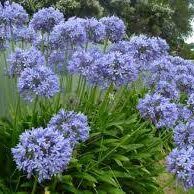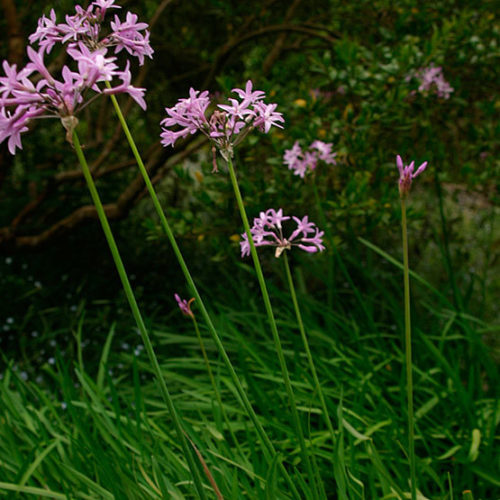Letting Loose the Secret to Successful Agapanthus Farming: Advice for a Flourishing Yard
In the world of gardening, growing agapanthus efficiently requires a calculated approach that includes numerous facets of plant care. By understanding the nuances of agapanthus farming, one can create an atmosphere where these plants grow and bloom generously.
Growing Agapanthus: Best Practices
When planting Agapanthus, appropriate dirt prep work is necessary for ensuring effective development and development of these beautiful blossoms. Agapanthus, typically called Lily of the Nile or African lily, thrives in well-draining dirt with a somewhat acidic to neutral pH degree - Agapanthus. Prior to growing, it is important to change hefty clay soils with raw material such as compost or peat moss to enhance drain and give crucial nutrients for the plants
To plant Agapanthus, select a place that gets full sunlight to partial color, as this will certainly promote healthy and balanced growth and abundant flowering. Dig a hole two times the size of the plant's origin round and place the Agapanthus at the same depth it was previously expanding. Gently backfill the opening with soil, pushing down firmly to remove any type of air pockets around the origins.
Water the freshly planted Agapanthus thoroughly and continue to keep the soil evenly moist, especially during the plant's active expanding period. Agapanthus. Using a well balanced plant food once a month can further support the plant's growth and blooming. By adhering to these ideal techniques for planting Agapanthus, you can create a magnificent screen of these captivating flowers in your garden
Ideal Dirt Conditions for Agapanthus
For optimal growth and growing success of Agapanthus plants, ensuring the dirt problems are optimal is important. Agapanthus flourishes in well-draining soil with a slightly acidic to neutral pH degree ranging from 6.0 to 7.0. This sort of soil permits ample water drain, protecting against waterlogging which can lead to root rot. To enhance soil drainage, take into consideration adding organic issue such as compost or peat moss when preparing the growing site. Moreover, Agapanthus prefers dirt that is abundant in nutrients, so including a well balanced plant food during the expanding season can advertise healthy growth and lively blooms.

Watering and Fertilizing Tips
To make certain healthy and balanced development and lively flowers, appropriate watering and feeding strategies are crucial for successful Agapanthus cultivation. Agapanthus plants benefit from regular watering, specifically throughout the expanding season. It is advised to water deeply once a week, guaranteeing the soil is damp yet not waterlogged. Throughout heat or in pots, even more regular watering may be necessary to avoid the soil from drying entirely.
When it concerns fertilizing Agapanthus, a well balanced fertilizer with equivalent components nitrogen, phosphorus, and potassium can be applied in the springtime to promote healthy development and flowering. Slow-release fertilizers are ideal for providing nutrients slowly over an extended duration. Avoid over-fertilizing, as this can bring about too much vegetation development at the cost of blossoms.
Furthermore, integrating raw material like compost right into the soil can enhance nutrient levels and boost soil framework, assisting in the total health and wellness of the Agapanthus plants. By adhering to these watering and feeding tips, garden enthusiasts can ensure their Agapanthus plants flourish and create stunning display screens of blossoms.
Pruning and Deadheading Strategies
Proper trimming and deadheading techniques play a crucial function in maintaining the health and appearances of Agapanthus plants, matching the important techniques of watering and fertilizing for effective farming. Pruning Agapanthus entails removing invested blossom heads, dead or yellowing leaves, and general shaping of the plant to promote much better you could try this out development. Deadheading, the procedure of getting rid of faded blossoms, not just improves the plant's look but likewise urges further growing.
When deadheading Agapanthus, it is recommended to trim off the blossom stem at the base using sharp, tidy shears. This process redirects the plant's energy from seed manufacturing back right into root and vegetation development, advertising a healthier and a lot more durable plant. Normal deadheading can expand the flowering duration of Agapanthus and prevent self-seeding, which can bring about congestion.
In terms of pruning, Agapanthus usually take advantage of a light trim after flowering to clean up the plant and encourage fresh growth. Cutting back the spent flower stems and removing any broken or dead foliage helps keep the plant's vigor and overall appearance. Nonetheless, it is vital to stay clear of cutting into the crown of the plant, as this can weaken its health and wellness.

Protecting Agapanthus From Vermins and Diseases
Applying efficient pest and illness management methods is crucial to securing the health and vigor of my site Agapanthus plants in cultivation. One typical parasite that impacts Agapanthus is the Agapanthus borer, a caterpillar that passages into the plant, triggering damage to the flowers and leaves.
In enhancement to insects, Agapanthus are at risk to diseases such as root rot and fungal fallen leave places. These issues can typically be avoided by making sure proper drainage and preventing overwatering. If indicators of disease appear, influenced components of the plant should be quickly gotten rid of to stop additional spread. Fungicides might additionally be used as a treatment step, complying with the supplier's guidelines meticulously. By remaining vigilant and resolving pest and disease issues promptly, garden enthusiasts can aid their Agapanthus flourish and flourish.

Verdict
To conclude, successful cultivation of agapanthus needs proper growing methods, ideal dirt conditions, appropriate watering and feeding, routine trimming and deadheading, and defense from illness and pests. By complying with these tricks and ideas, garden enthusiasts can guarantee a flourishing yard loaded with lovely agapanthus blooms. Agapanthus. Keep in mind to preserve constant treatment and attention to information to advertise the health and durability of go to website these sensational plants
When growing Agapanthus, proper soil preparation is vital for ensuring successful growth and advancement of these attractive flowers.Water the freshly grown Agapanthus thoroughly and continue to keep the dirt equally wet, especially during the plant's active expanding season.For ideal growth and blooming success of Agapanthus plants, ensuring the soil problems are excellent is crucial. When planting or hair transplanting Agapanthus, guarantee the soil is well-prepared to offer the necessary foundation for the plants to develop themselves efficiently. One usual pest that impacts Agapanthus is the Agapanthus borer, a caterpillar that passages right into the plant, creating damages to the leaves and flowers.
Comments on “Usual Agapanthus Issues and Exactly How to Resolve Them”